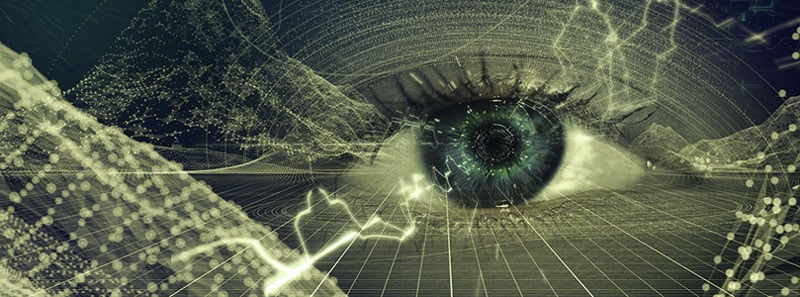
The human eye is a particularly complex instrument. Working in combination with the brain, it allows us to perceive our surroundings. We are able to recognize objects in a split second, even when their exact shape varies. We use perspective to analyze our environment and have a wide field of vision capable of focusing very sharply on particular areas. These abilities have gradually evolved over millennia as humans continually adapted to many different stimuli and environments in order to survive.
However, our visual perception also has important limitations. For starters, we only have two eyes. They are too slow to see fast-moving objects in detail and they are sensitive to only a limited portion of the light spectrum. Glare and reflection also impede our ability to focus on certain properties of an object, such as size or color, for a long time. In addition, we are quite subjective in how we perceive and store images. No wonder, then, that the human eye cannot perform accurate measurements and is therefore not the ideal instrument to verify product quality.
There is one thing for which the human eye is sublime: spotting anomalies or defects on products. We see a defect on a product right away, provided that it is big enough. Even though we have never seen the defect before, we immediately notice a scratch on a small object or a torn seam on clothing. Usually, we unconsciously perceive the anomaly when we pick up a product, turning it and observing the reflections. This, combined with our exceptional interpretative abilities, makes the human eye almost unbeatable.
In recent years, however, Machine Vision technology has evolved considerably and now matches our interpretative abilities in many cases. Using complex, self-learning vision algorithms, the current technology is now capable of processing images in the same way the human brain would perform the task. If supplied with a picture library with additional information, intelligent software can teach itself where to find the errors without anyone having to program a single line of code. This additional information can indicate which products are good and which are bad, or show where defects are located. Even products with a changed design can be recognized quickly.
In practically any situation, Machine Vision can match or even surpass the visual inspection abilities of our eyes and brain. Would you like to learn more and find out how Machine Vision could be implemented for your application or product? If so, feel free to contact Averna.